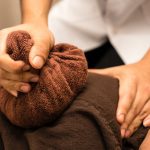- Introduction: Rice Water for Hair Growth
- The Thai Herbal Hair Care Tradition
- Star Ingredients & Why They Work
- DIY Recipes: Oils, Masks & Treatments (Step-by-Step)
- Shampoo Bars, Conditioners & Store-Bought Shortcuts
- Routines That Last: How to Build Your Thai Herbal Week
- Ingredient Sourcing & Kitchen Setup
- Technique Tips That Change Everything
- Safety, Sensitivities & When to Skip
- Smart Shopping: Decoding the Label
- Putting It All Together: A 7-Day Mini Plan
- Conclusion
- Frequently Asked Questions (Thai Herbs, Realistic Expectations)
Introduction: Rice Water for Hair Growth
Thailand’s beauty wisdom runs deep—rooted in kitchens, temple courtyards, and family gardens. Grandmothers saved rinse water from jasmine rice, markets sold bundles of aromatic leaves for weekend hair rituals, and village barbers brewed citrusy shampoos from backyard trees. Today, many of us are looking back to those simple practices to reduce breakage, calm flaky scalps, and bring back a soft, healthy shine. In this guide, we translate that tradition into modern steps you can follow at home—clear, practical, and respectful of how these remedies are used in everyday Thai life.
You’ll find easy recipes, ingredient spotlights, and realistic routines you can actually stick with. We highlight a cultural hero—kaffir lime shampoo for hair loss—alongside approachable at-home methods, bottle alternatives, and safety notes for sensitive scalps. You’ll also see how Thailand’s plant-based routines (think fresh leaves, flowers, and kitchen oils) fit into an overall wellness mindset—simple food, mindful sun care, and gentle cleansing—that keeps hair happier over time.

Whether you’re new to Thai herbal hair care or ready to fine-tune your natural regimen, this practical playbook will help you choose what to try first, how to blend ingredients, and how to set a routine that respects your schedule, budget, and goals.
The Thai Herbal Hair Care Tradition
In Thailand, many remedies begin with ingredients you already have: rice, limes, coconut oil, butterfly pea blossoms, and lemongrass. Instead of relying on heavy silicones or harsh detergents, families lean on light, aromatic botanicals to cleanse, soothe, and condition. The goal is to support the scalp so the hair looks fuller and behaves better—less frizz, fewer flakes, and a softer, natural shine.
👉 “Looking to upgrade your natural routine? Don’t miss our guide on Top organic beauty products made in Thailand.”
Traditional preparation is simple. Leaves are crushed and rinsed; peels are simmered; flowers are steeped into vivid teas. Street markets sell fresh herbs next to shampoo bars made by local artisans, and many salons still keep a house recipe for aromatic rinses or pre-wash oils. It’s a calm, consistent approach: cleanse with gentle botanicals, nourish with light oils, and protect from heat and sun. Over time, this routine can help Thai herbal hair care feel less like a trend and more like a lifestyle you can maintain.
Star Ingredients & Why They Work
1) Rice Water for Hair Growth: What It Is, Why It’s Beloved
From village kitchens to social media, the practice is simple: save starchy rice water after rinsing your grains, and use it as a post-shampoo hair rinse. Many users love the silky after-feel and the way hair seems to behave better when styled. Used consistently, rice water for hair growth is often praised for helping hair look thicker and smoother, especially in combination with regular trims, gentle detangling, and a moderate heat routine.
Beyond the anecdotal buzz, rice water is rich in starches and small amounts of amino acids and B-vitamins. Those starchy compounds can temporarily coat the hair cuticle, improving slip and reducing friction—handy if your hair tangles easily. It’s not magic; it’s a well-timed conditioning step.
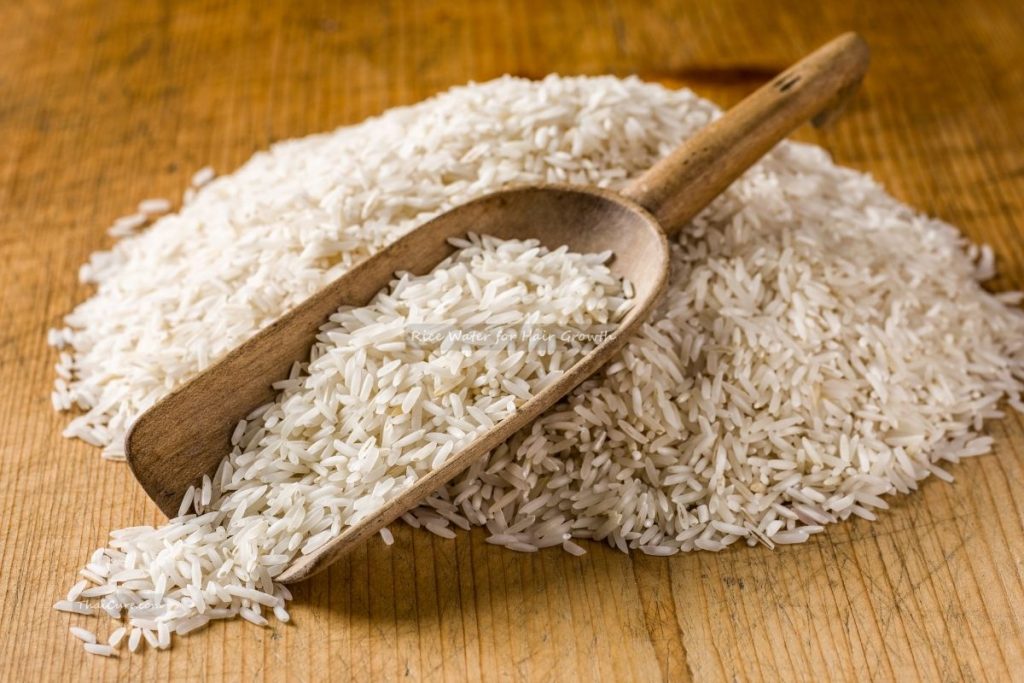
How to use: After a gentle wash, pour the cooled rice liquid through your hair, massage lightly at the scalp, leave on for 2–3 minutes, and rinse with cool water. Start once a week and adjust based on how your hair feels.
Pro Tip: If you struggle with buildup, try a lighter dilution or alternate weeks. When in doubt, less is more.
Related ideas to try: a quick rice water rinse for hair after workouts, or experimenting with mild fermentation (see below) for extra smoothness.
Fermented vs. Fresh
Some people lightly ferment the rice liquid for a day to bring down pH and increase slip. If you’re curious, start small and watch how your scalp reacts. Not everyone loves fermentation, but many report noticeable fermented rice water benefits—mainly shine and detangling.
DIY Basics
If you’re brand-new, begin with a fresh batch and keep it simple. Once you’ve learned what your hair likes, you can explore how to make rice water for hair that’s a bit stronger, add a drop of tea tree (if your skin tolerates it), or blend with a floral tea.
2) Kaffir Lime Shampoo for Hair Loss: Thailand’s Citrus Classic
The fragrance of kaffir (makrut) lime is unmistakable—bright, green, slightly floral. For generations, Thai families have simmered the bumpy peels to create a gentle wash that leaves hair feeling clean and light. Many people who struggle with shedding or flakes love kaffir lime shampoo for hair loss as part of a calmer, plant-based routine.
👉 “Curious about citrus in Thai wellness? Explore our deep dive on Kaffir Lime Refreshing Thai Herb with Remarkable Health Benefits.”
How might it help? The aromatic compounds in the peel can support a clean, balanced scalp environment—great if you’re dealing with oiliness, product buildup, or the occasional itchy day. Thai barbers often recommend a citrus rinse between regular shampoos to help hair feel lighter and look more lifted at the roots.
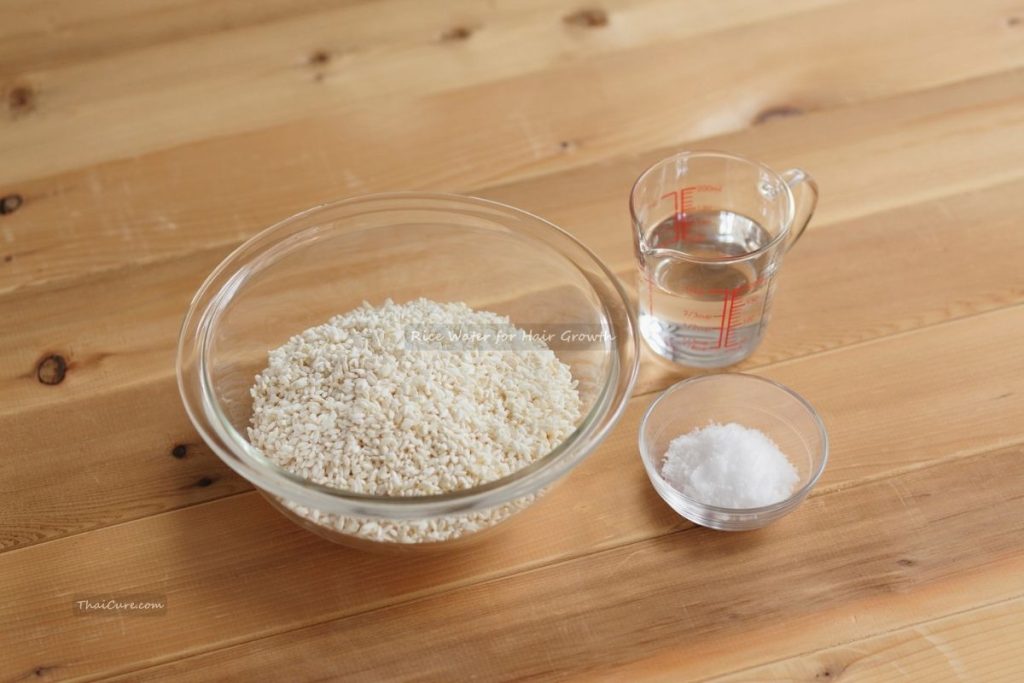
Home method: Simmer strips of peel in water for 15–20 minutes, cool, strain, and use as a pre-shampoo massage or a final rinse. If you prefer a mild lather, blend the citrus tea with a small amount of your regular cleanser.
Shopping tip: Look for brands that highlight real citrus distillates and minimal foaming agents. Light scent, easy rinse, and a clean feel are your benchmarks.
To set expectations, kaffir lime benefits for hair are mainly about scalp freshness and comfort. The goal is to keep the environment on your scalp happy so hair can behave better day to day—not to replace medical care for chronic conditions. For the DIY-inclined, a kaffir lime shampoo DIY formula can be as simple as a strong citrus tea plus a gentle, fragrance-free base.
3) Butterfly Pea Hair Treatment: The Brilliant Blue Boost
If you’ve ever sipped electric-blue tea in Thailand, you’ve met the butterfly pea flower. Its vibrant infusion is also used as a soothing hair mask or rinse. A simple butterfly pea hair treatment—tea steeped for 10–15 minutes and cooled—can help calm the scalp and add a little slip to your lengths. Many users like it after sun exposure or when hair feels frizzy from humidity.
How to try it: Brew a cup, cool, strain, and pour through clean hair. Leave for 2–3 minutes, then rinse. It’s gentle enough to test mid-week between full wash days.
4) Supporting Thai Botanicals for Oils, Masks & Treatments
Thailand’s herbal pantry is packed with practical add-ins. Coconut oil is the obvious classic for pre-wash hair softening; lemongrass brings a fresh, spa-like aroma; pandan leaves lend a green, creamy scent that’s beloved in Thai desserts and wellness recipes.
- For deep softness: Try a light pre-wash with coconut oil hair mask Thailand—a small amount through mid-lengths to ends, left on 20–30 minutes before shampoo.
- For an invigorating massage: Warm a few drops of jojoba and add a hint of lemongrass; many users find a weekly lemongrass scalp oil session helps them slow down and enjoy wash day.
- For occasional scalp comfort: Kitchen spices like turmeric appear in home masks; if you experiment, keep it mild and patch test. (Strong spices can stain or irritate.) Some DIYers like a turmeric scalp mask anti-inflammation approach, but always dilute and proceed gently.
- For fragrance lovers: Pandan leaves can be steeped for a green, nutty aromatic rinse—some fans swear by a pandan leaf hair treatment as their “Sunday spa” habit.
DIY Recipes: Oils, Masks & Treatments (Step-by-Step)
A. Thai Herbal Double-Rinse (Rice + Lime)
What it’s for: A light weekly ritual to boost slip and scalp freshness without heaviness.
- Shampoo lightly, then squeeze out excess water.
- Pour the rice liquid from roots to ends. Wait 2–3 minutes, rinse.
- Follow with cooled citrus tea; massage at the roots for one minute. Rinse and condition as needed.
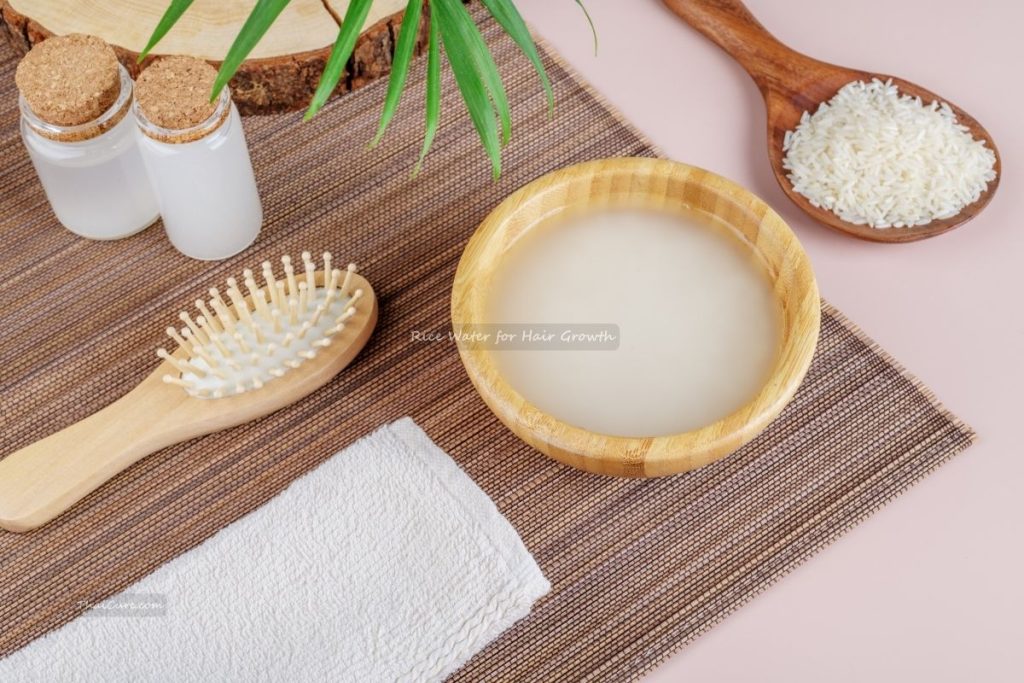
This gentle combo pairs the smoothness many attribute to rice water for hair growth with the airy clean feel of kaffir citrus.
B. Blue Pea Gloss Rinse
What it’s for: Frizz-prone hair in humid weather.
- Steep 1 cup of butterfly pea blossoms in hot water for 10 minutes; cool and strain.
- After cleansing, pour through hair, comb with fingers, wait 2 minutes, rinse.
- Air-dry or diffuse on low heat.
Many people keep this as their mid-week quick fix—a colorful ritual that feels special but takes only minutes.
C. Pre-Wash Oil for Ends
What it’s for: Dryness and tangles at the tips.
- Warm a teaspoon of coconut or rice bran oil between your palms.
- Smooth through mid-lengths and ends; detangle with a wide-tooth comb.
- Shampoo 20–30 minutes later. Optional: a drop of lemongrass in carrier oil for scent.
Shampoo Bars, Conditioners & Store-Bought Shortcuts
Short on time? Thailand has a thriving cottage industry for gentle bars and liquid cleansers using local botanicals. When shopping:
- Look for a sulfate-free Thai shampoo if you wash frequently or color your hair—gentler surfactants are often enough to cleanse without stripping.
- Pair with a light, silicone-free conditioner Thailand choice if your hair gets weighed down; that way you keep slip without the heavy film.
- Curious about artisan options? A DIY herbal shampoo bar Thailand kit or class can be a fun weekend project, and you’ll learn exactly what’s in your cleanser.
Routines That Last: How to Build Your Thai Herbal Week
Consistency is what makes simple routines work. Think in weeks, not days, and adjust for your climate and activity level.
If you style with heat or live in a dry climate:
- Pre-wash oil once a week (ends only), a short rice rinse after gym days, and a blue pea gloss when hair looks dull.
- Keep tools on low heat; a microfiber towel speeds dry time without friction.
If you’re in tropical humidity:
- Lighter products and more frequent rinses win. A citrus tea massage between shampoos keeps roots fresh; a quick rice rinse adds slip before air-drying.
- Tie hair loosely at night to reduce tangles.
If your scalp is sensitive:
- Patch test every new herb; dilute strongly at first.
- Keep a gentle base shampoo you trust; add herbal steps slowly so you can see what’s doing what.
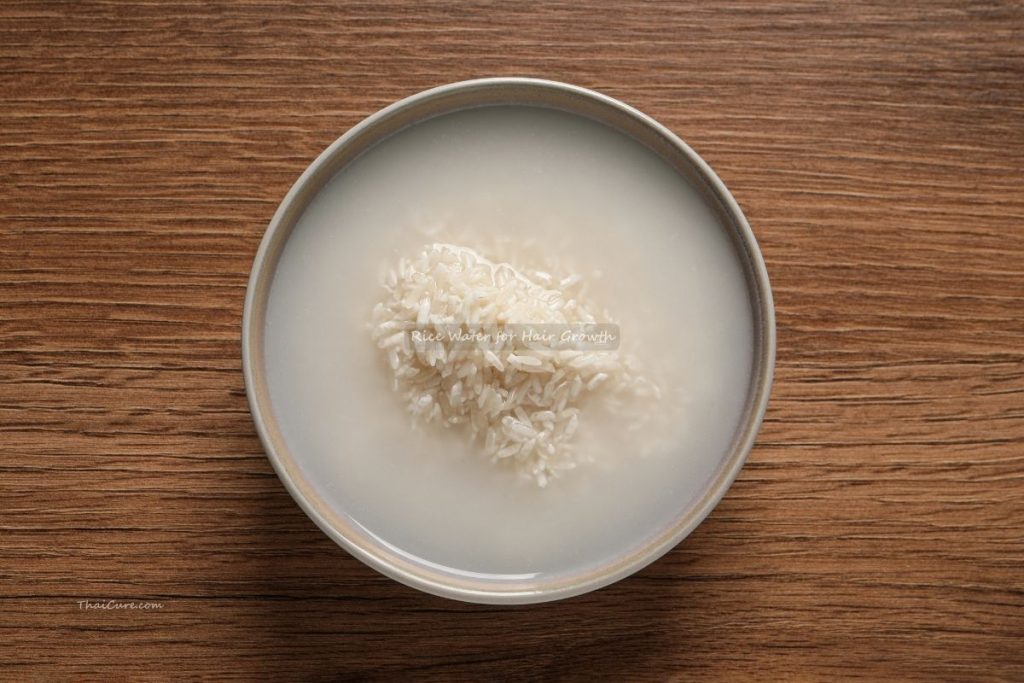
Over time, this steady cadence can help strengthen hair roots naturally—not by forcing growth, but by keeping the scalp comfortable, the hair shaft protected from rough handling, and your routine realistic.
Ingredient Sourcing & Kitchen Setup
Where to buy: Asian groceries, wet markets, herbal shops, or online apothecaries carry dried butterfly pea blossoms, pandan leaves, kaffir limes, and jasmine rice. Look for fresh, aromatic peels and clean, well-dried flowers.
Storage: Keep dried herbs in airtight jars away from light; refrigerate fresh peels and use within a few days. Brewed rinses are perishable—make small batches and discard if the scent changes.
Tools you’ll use a lot: A small saucepan, strainer, wide-mouth bottles or jars, and a silicone funnel. A squeeze bottle makes it easy to target the scalp without drenching your bathroom floor.
Technique Tips That Change Everything
- Detangle before you wash. Use your fingers or a wide-tooth comb. Less friction means fewer broken strands.
- Massage with the pads of your fingers, not nails. You’re encouraging circulation, not scraping the skin.
- Cool-down rinse at the end. A brief cool rinse helps close the cuticle so hair reflects light better.
- Handle wet hair like silk. Avoid rough towel-drying; blot or wrap with a soft T-shirt or microfiber towel.
- Small tweaks beat big overhauls. Add one new step at a time and give it two weeks. Your routine should feel soothing, not stressful.
These habits plus an easy herbal step or two are often enough to help rice water for hair growth deliver its best “easy slip and smoother styling” effect without bloating your routine or budget.
Safety, Sensitivities & When to Skip
Natural doesn’t mean risk-free. Always patch test: apply a small amount behind the ear or on the inner arm and wait 24 hours. If you have a citrus allergy, skip kaffir entirely. If your scalp is very reactive, keep dilutions high, avoid fermentation, and introduce herbs one by one.
If you’re on medicated shampoos or topical treatments, continue them as prescribed. Herbal routines are complements, not replacements. And if you notice sudden shedding or inflamed patches, see a clinician for diagnosis before adding new variables.
Smart Shopping: Decoding the Label
When buying bottled blends or bars inspired by Thai botanicals, scan for:
- Short ingredient lists and recognizable plant names.
- Mild cleansers (e.g., glucosides) rather than very harsh ones.
- Lightweight conditioning agents that rinse clean.
- Transparent labeling about extracts or hydrosols (not just “fragrance”).
If you experiment with kits, workshops, or artisan markets, you’ll quickly pick up the skills to personalize your recipes—and that’s the joy of this approach. It’s tactile, fragrant, and satisfying.
Putting It All Together: A 7-Day Mini Plan
Day 1 (Sunday): Pre-wash oil on ends (20 minutes), gentle cleanse, rice rinse, light conditioner.
Day 3 (Tuesday): Blue pea quick gloss; cool rinse; air-dry.
Day 4 (Wednesday night): Citrus scalp massage, 60 seconds, rinse.
Day 6 (Friday): Regular shampoo, mask or conditioner, cool rinse; minimal heat styling.
Daily: Soft tie at night, UV protection for long outdoor days, drink water, be kind to your scalp.
This cadence is flexible, low-stress, and designed for visible softness without a giant product lineup. Over time, habits like these support hair fall prevention natural methods by keeping the scalp balanced and styling gentle.
Conclusion
Thai beauty wisdom thrives because it’s simple and repeatable. A weekly rice rinse for slip and shine, a citrus massage for freshness, and a colorful flower tea when humidity frizzes everything—it’s a rhythm that fits real life. Used patiently, rice water for hair growth can make styling easier and hair feel fuller; paired with a calm routine, kaffir lime shampoo for hair loss supports a fresh, comfortable scalp. The point isn’t perfection—it’s a ritual that feels good, smells beautiful, and helps your hair look like itself on its best day.
When you’re ready, choose one step to try this week. Keep notes, adjust, and enjoy the process. Your bathroom is now a tiny herbal kitchen—fragrant, practical, and yours.
Frequently Asked Questions (Thai Herbs, Realistic Expectations)
Q1: Can I leave rice liquid on overnight?
Most people don’t need to. The starchy coating can feel heavy. A few minutes post-shampoo is enough for most hair types. If you test longer, start with 10–15 minutes and observe.
Q2: Is citrus too harsh for daily use?
Strong citrus teas daily can feel drying for some scalps. Save a robust brew for once or twice a week, and keep your daily routine mild.
Q3: Will blue pea tea stain blonde hair?
It’s unlikely at typical strengths, but always test a small section first. Rinse thoroughly, and avoid highly concentrated soaks on very light hair.
Q4: I sweat a lot—can I rinse without shampoo?
Absolutely. Many Thais do a quick herbal rinse after exercise and save a full shampoo for later. Water + a light tea is often enough to refresh.
Q5: What if I have dandruff or shedding that doesn’t improve?
Natural routines are supportive, but persistent symptoms deserve a dermatologist’s input. Combine gentle home care with professional advice as needed.


